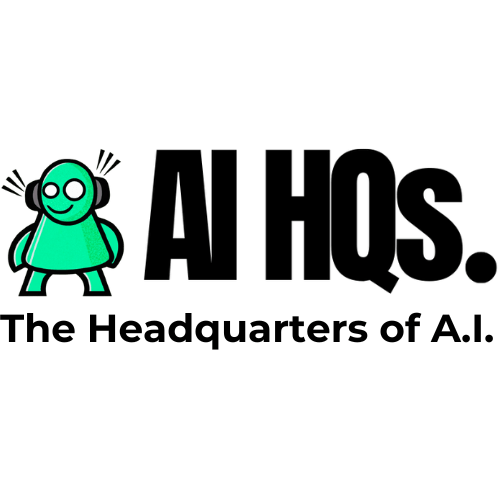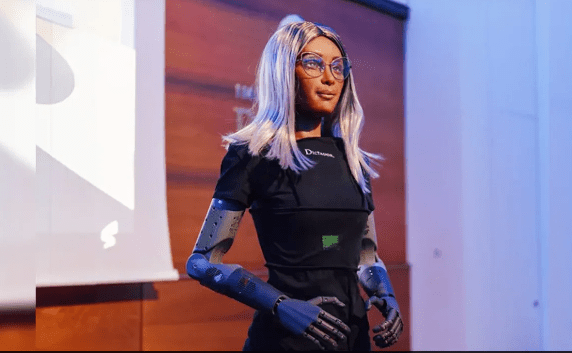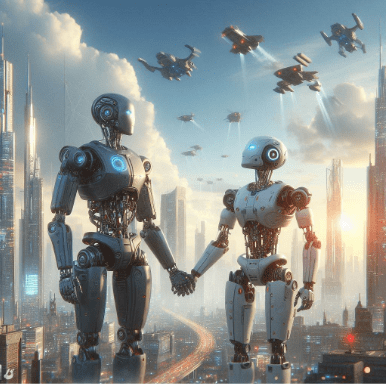AI-Powered Robotics Redefining Industries and the Future
In the dynamic realm of artificial intelligence, the transformative journey that began with language models like ChatGPT is now evolving into a groundbreaking era of AI-powered robotics. The success of large language models (LLMs) paved the way for a foundation model approach, and now, the fusion of AI and robotics is poised to revolutionize industries globally.

The Foundation Model Approach: From Text to the Physical World
Much like the success of language models such as ChatGPT, the development of a “GPT for robotics” relies on a foundation model approach. This approach enables the creation of a universal AI that can seamlessly adapt across various tasks in the physical world. By training on a vast, proprietary, and high-quality dataset, these AI-powered robots gain the ability to understand their physical surroundings, make informed decisions, and adapt to diverse scenarios.
The key to the success of language models like ChatGPT lies in training on a large and diverse dataset. Similarly, training robots for the physical world presents unique challenges. Unlike language or image processing, there’s no preexisting dataset that comprehensively represents how robots should interact with the physical world. The solution? Deploying a fleet of robots in real-world production environments to generate a large, high-quality dataset.
Just as reinforcement learning (RL) played a pivotal role in enhancing the capabilities of language models, it is equally essential in the realm of robotics. Reinforcement learning from human feedback (RLHF) enables robots to align their actions with human preferences, allowing them to navigate through complex physical tasks by learning from trial and error. This autonomous, self-learning approach, combined with deep reinforcement learning, empowers robots to continually fine-tune their skills in response to new scenarios.
As we stand on the cusp of a new era, AI-powered robots are already making waves in various industries. Warehouses, once bustling with human labor, now see the integration of robotics for tasks like inventory management and transportation. In agriculture, AI and robotics collaborate to automate activities such as irrigation, pest control, and harvesting, revolutionizing farm productivity. The healthcare sector benefits from AI-driven robots that assist in surgeries, analyze health data, and operate in remote areas.
Despite the remarkable progress, building AI-powered robots for diverse real-world settings comes with challenges. Adapting to different hardware applications and ensuring human-like autonomy across industries require sophisticated solutions. The explosive growth in robotic foundation models is anticipated to accelerate, with commercially viable applications reaching scale in 2024.
In the midst of concerns about job displacement due to artificial intelligence, a Colombian spirit brand named Dictador has taken a groundbreaking step by appointing Mika, a humanoid robot, as its Chief Executive Officer (CEO). Developed as a research project by Hanson Robotics in collaboration with Dictador, Mika is designed to embody advanced AI and machine learning algorithms. In a company video, Mika emphasizes its ability to swiftly and accurately make data-driven decisions, functioning tirelessly 24/7 without personal bias.
The move by Dictador reflects a broader trend in the integration of AI and robotics, marking the onset of a new era of intelligent robots. As we approach the final quarter of 2023, the synergy between generative AI and robotics is creating unparalleled technological advancements. This integration is seen as crucial in addressing the growing challenges of labor shortages and the need for automation across various industries.
The merging of generative AI and robotics has already begun reshaping the landscape of smart robots. Companies like Boston Dynamics and Sanctuary AI are working towards developing robots that go beyond being mere cameras on wheels. The goal is to create robots capable of mastering diverse terrains and tasks, facilitated by generative AI for enhanced robot vision. Tasks such as object detection, image segmentation, and image generation are expected to improve significantly, contributing to advancements in robotic capabilities.
The imperative for smart robots becomes evident as global demographics pose challenges to traditional workforce structures. Countries like Japan, Germany, and the United States are grappling with labor shortages due to factors such as an aging population and changing workforce dynamics. In response, industries are turning to smart robots to fill the gaps and ensure the survival of companies facing staff shortages.
The deployment of AI-driven robots extends beyond traditional industries into areas like healthcare, agriculture, warehouses, and automobiles. In healthcare, AI-driven robots are transforming patient care, assisting in surgeries, and even operating in remote areas. Agriculture benefits from the integration of AI, machine learning, and robotics, optimizing farm productivity through tasks such as automated irrigation and harvesting.
Warehouses are witnessing a significant impact from AI and robotics, streamlining operations, enhancing order fulfillment, and reducing labor costs. The COVID-19 pandemic has accelerated the adoption of automation in warehouses, with AI-powered robots playing a crucial role in improving efficiency.
The advancements in AI and robotics are not without challenges. Concerns about job displacement and the impact on various industries are real. However, proponents argue that the combination of AI and robotics will lead to the creation of new jobs and increased productivity in the long run. The World Economic Forum predicts that the number of jobs created by the “jobs of tomorrow” will surpass those destroyed by automation.
As industries strive to adopt and deploy smart robots, the role of AI becomes pivotal in enabling robots to navigate complex environments, make real-time decisions, and interact seamlessly with human workers. The emergence of robots capable of following real-time instructions without extensive pre-programming is expected to revolutionize industries over the next five years.
In conclusion, the marriage of AI and robotics is reshaping the future of industries, offering solutions to workforce challenges, enhancing efficiency, and paving the way for a new era of intelligent and adaptable robots. The rise of smart robots powered by AI-driven automation signifies a transformative moment that holds the potential to redefine how we work and interact with technology. The achievements in language models are serving as a blueprint for the development of AI-powered robots, with applications spanning healthcare, agriculture, warehouses, and automobiles. As industries embrace this transformative wave, we are on the brink of an AI robotics “GPT moment” that will redefine the way we perceive and integrate automation in our daily lives. The future promises not just efficiency in the digital realm but a tangible impact on the physical world, marking a new chapter in the evolution of artificial intelligence and robotics.
for all my daily news and tips on AI, Emerging technologies at the intersection of humans, just sign up for my FREE newsletter at www.robotpigeon.beehiiv.com







